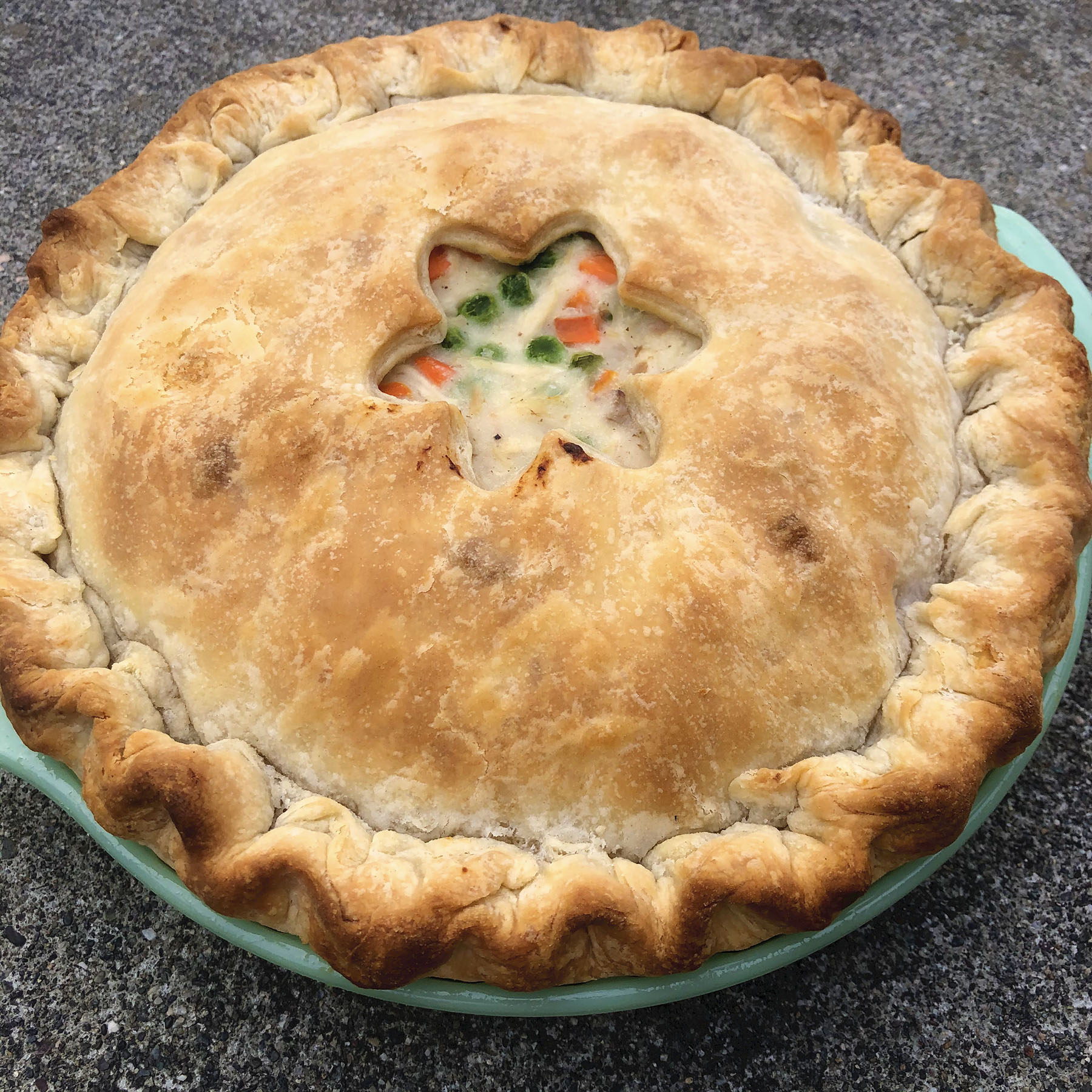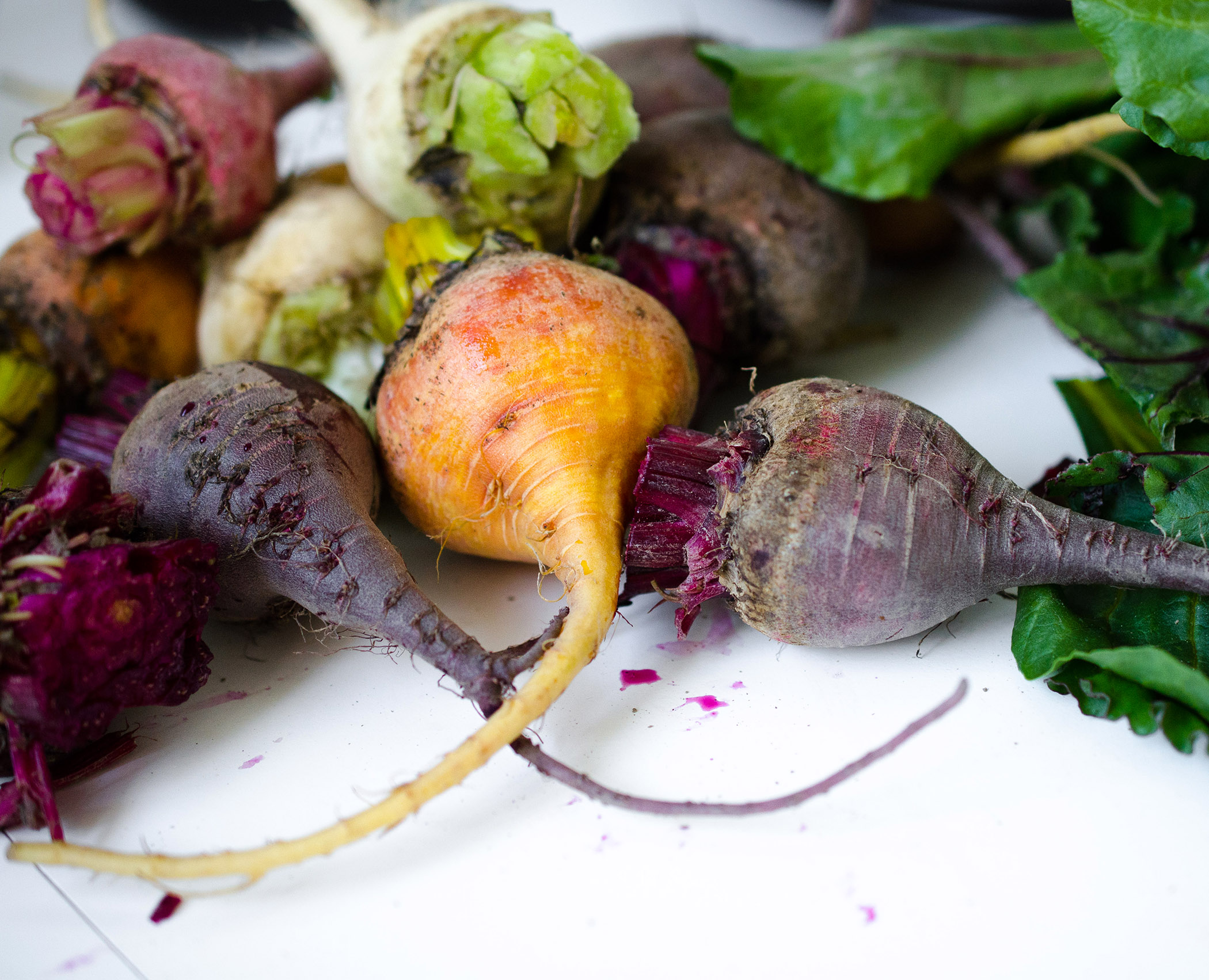
My mother made extraordinary pastry as did my father’s sister, Mary Frances. Their skill intimidated me and, until I decided to make pot pies commercially, I never made pastry, I would always ask mom to make it for me. So, when I decided to open my pie shop MOM in the 1970s, I had to spend many, many hours carefully watching her make her famous pastry. She worked with me and my dear friend, Hu Pope, who would be making the pastry daily in the bakery, torturing us with her skill and our ineptitude. Of course, the fact that she never measured anything and kept telling us that it was all in the feel didn’t help either. We eventually got it, but I still believe that it was mainly the use of a big Hobart mixer and a commercial pie shell press which kept our hot hands from touching the dough that gave our acclaimed pastry the same flaky texture of her homemade dough. However, the years in the bakery eliminated all intimidation and I began fearlessly tackling pastry making. I usually do a fine job but I still miss my mom’s touch. Since I made chicken pies every day for 10 years, I now generally leave their preparation to the kids, except for those chilly days when I miss my mom.
When I was a child, chicken pie was often made from leftover roast chicken and gravy. It is one of those homey dishes that can be made in almost any way – the chicken can be dark and white meat, all white meat, chopped, shredded, cubed, or turkey; the vegetables can be cubed, diced, sliced (Chris’ method,) chunked; mushrooms added. You get the picture. This recipe is the basic – it’s up to you to make it your own.
I share photos of my individual chicken pie. I usually make these as an introduction to people dining with us for the first time. I think they are homey, delicious, warming and do all the things you want to do to bring people to your table. I also share a recent photo of one of Chris’s West Coast famous chicken pot pies. How proud my mom would be of him.

Serves 6 to 8
One 4 pound chicken, rinsed and cut into pieces (or 2 pounds boneless,
skinless chicken breasts cooked in about 3 cups canned, fat-free, low-
sodium chicken broth)
Coarse salt and freshly ground pepper to taste
Nana’s Flaky Pie Crust (recipe follows)
4 organic carrots, well-washed, trimmed, and cubed
3 medium organic potatoes, well-washed and cubed
1 organic onion, peeled and diced
1 cup frozen petit peas, thawed
2½ tablespoons chicken fat or butter
2½ tablespoons sifted all-purpose flour
Place the chicken in a heavy saucepan, cover with cold water, and season with salt and pepper to taste. Place over high heat and bring to a boil. Lower the heat to a simmer, cover, and cook for about 1 hour or until the chicken is cooked through. Remove from the heat and strain through a fine sieve, separately reserving the chicken and cooking liquid. Set aside to cool.
While the chicken is cooking, make the pastry. Divide the dough into two equal pieces, wrap each piece in plastic film and refrigerate for at least 30 minutes to chill before rolling.
When cool, remove and discard the chicken skin. Pull the meat from the bones and, if necessary, cut it into bite-sized pieces. Place the meat in a heatproof bowl and discard the bones. Set the meat aside.
Preheat the oven to 450ºF.
Pour 3 cups of the reserved cooking liquid into a large saucepan. Place over medium-high heat and bring to a boil. Add the carrots, potatoes, and onion and again bring to a boil. Season with salt and pepper to taste, lower the heat, and simmer for about 12 minutes or just until the vegetables are barely cooked. Remove from the heat and stir in the peas. Strain the vegetables, separately reserving the vegetables and the liquid.
Place the chicken fat or butter in a medium saucepan over medium heat. When melted, stir in the flour. When blended, whisk in 2 cups of the hot broth, cooking for about 5 minutes or until the broth has thickened. Pour the thickened gravy over the chicken meat. Add the vegetables, gently folding the mixture together. If the mixture seems too thick, fold in some of the remaining unthickened cooking liquid.
Remove the dough from the refrigerator. Unwrap and, working with one piece at a time, roll the dough out as directed in my NOTE. Fit one piece into a 10-inch pie plate and prick the bottom with the tines of a fork.
Pour the mixture into the prepared pie plate. Fold the remaining top crust in half over the rolling pin, lift, and place over the filling. Unfold to cover the filling and attach to the bottom crust by pressing the excess dough from the edge of the top and bottom crust together with your fingertips. Fold the pressed dough edge up and inward, making a rim around the edge of the pie. Starting at the edge opposite you, pinch the dough between your thumb and index finger around the edge of the pie at about ¾ inch intervals, forming a fluted design. (The pie may be made up to this point and stored, well-wrapped and frozen, for up to 3 months).
Place the pie on a baking sheet in the preheated oven and bake for 15 minutes. Lower the heat to 350ºF for an additional 20 minutes or until the crust is golden and the filling is almost bubbling out.

Nana’s Flaky Pie Pastry
Enough dough for one double-crust 10-inch pie
2½ cups all-purpose flour, sifted
¼ teaspoon salt
Pinch sugar
¾ cup plus 1 tablespoon vegetable shortening, chilled
½ cup unsalted butter, cut into cubes and chilled
½ cup ice water
Combine the flour, salt, and sugar in the bowl of a food processor fitted with the metal blade. Process to aerate and blend.
Add the shortening and butter and, using quick on and off turns, process just until crumbly. With the motor running, add the water and process just until the dough begins to ball. Scrape the dough from the processor bowl and divide it into two equal pieces. The dough may also be frozen; thaw before using.
NOTE: My mother never used a food processor to make her dough but I think it makes great pastry, particularly because the processor allows you to make quick and easy work of the job without handling the dough too much. However, if you over-process, the heat created from the speed of the machine will toughen the dough.
Some pastry recipes give an approximate measurement for the water, but that always scares me. How do you tell when enough is enough if you’re not a seasoned cook? Most approximates are based on flavor so it really becomes a matter of taste but, with pastry making it is all up to the kitchen witch. Rainy days, humid days, hot days, warm kitchen, glutenous flour – all of these play in how much water will be enough water to create a dough that just holds together and does not toughen. I’ve found that the ½ cup of water is nearly always the correct amount. Add the water slowly and watch carefully. The incorporation moves much quicker with the food processor than it does when making dough by hand.
If you have never made pastry before, the rolling out is usually the most frightening task. I have found that Wondra flour is terrific for flouring the work surface and the rolling pin as it only adds a light coating of flour to the dough. Then, don’t panic; use a light hand, pushing the dough out from the center, lightly coating it and the rolling pin with Wondra if it seems to hang onto the rolling pin. Lift the pin gently as you near the edge of the pastry to prevent breakage. When the desired size is reached, lift the pastry by gently folding it in half over the rolling pin and slip it, still folded, into the pie pan. Carefully unfold it to cover the bottom of the pie pan and remove the rolling pin. Do not stretch the dough or it will shrink when baked. If the pastry tears, not to worry, just gently pinch it back together. Smooth the pastry down into the pan with quick pressing movements.
A further note: If you can find an excellent quality lard and you aren’t concerned about fat in your diet, use it in place of the vegetable shortening and butter when making a savory pie. It adds a wonderful meaty flavor.
From my son Chris: Longing for home on a chilly, foggy San Francisco afternoon, I decided to make a chicken pie. I was feeling a bit challenged as I wasn’t sure that I could live up to my pot pie heritage. Nana, mom’s mom, made the flakiest pie crust you have ever tasted and I had spent my teenage years living off of the acclaimed chicken pies that mom made at her bakery. I called mom and got the basic recipe, did my shopping, and announced to Canada that we were going to have a MooMoo dinner. I was worried that I had overestimated my skill but forged ahead. I was aiming for Nana’s flaky crust and a pie that could be cut into nice even pieces with just a calm oozing of gravy. But although the finished pie looked terrific, the crust wasn’t as flaky as I had hoped and the filling ran all over the place once I cut into it. Didn’t matter – Canada loved it and so did I.
Determined to master the craft, we added chicken pie to our favorite menu list. After a good many tries, I like to think that mine is now equal to Nana’s. I always use organic vegetables, but conventional can easily be substituted.

Read Full Post »















